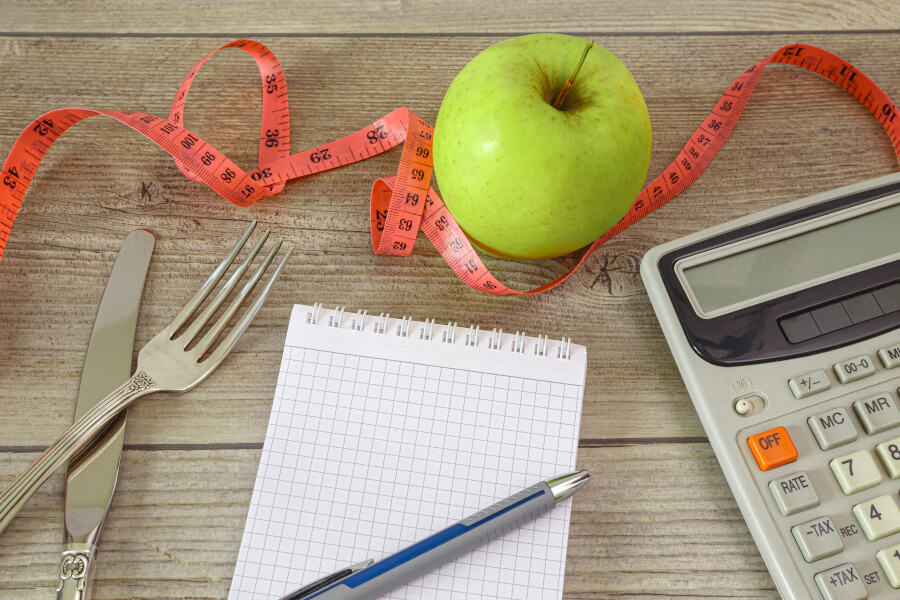
Many people come to WAG Nutrition to know how many calories they need to lose weight. Then, when they get the initial macros from their coach, they wonder, “How do you calculate macros?” or how to calculate a calorie deficit.
Use this calorie calculator guide as a jumping-off point. It will help you determine how many calories you need to lose weight or gain muscle and finally reach your goals.
How to Calculate Your Calories for Weight Loss or Muscle Gain
Finding how many calories you need to lose weight or gain muscle is not as complicated as you may expect. It is a starting point based on formulas that have been widely researched and concluded as “safe” for the average healthy human.
But finding your calories and macros for weight loss, maintenance, or muscle gain is still an art. At WAG Nutrition, we’ve worked with thousands of clients, and our online nutrition coaches have years of experience taking information and applying it to their client’s unique circumstances.
Previous dieting history, current eating habits, preferences, and many other factors may shift your "ideal" starting calories and macros.
Advertisement
The results from tracking macros come from building consistency and knowing all the different ways to measure progress. From there, you must pay close attention to how your body responds to a given set of targets and learn when and how to make calorie adjustments for fat loss or muscle gain.
At WAG Nutrition, if you end each day within 5g of protein and carb targets and 2g of your fat target, we consider that “consistent.”
Let’s dive into how the WAG calorie calculator works.
WAG Nutrition Online Calorie Calculator
We'll walk you through three steps (and lots of math) for calculating your calories and macro needs based on your goals. We recommend downloading our free macro calculator cheat sheet and following along as you go!
Here is what you can expect to learn:
Advertisement
- How to determine baseline calories
- How to set calories for weight loss, weight maintenance, or weight gain
- How to determine your macros based on your calories
Let’s dive in!
How to Determine Your Daily Calorie Needs
No matter your ultimate goal, determining your estimated maintenance calorie level is the first step.
Many things impact maintenance calories, like metabolism, activity, age, gender, height, and weight. Our equation takes your weight, activity, gender, and goals into account.
Let’s start by finding your activity multiplier. Women or those with a slower metabolism should use the lower value in the “calculation” section. Older individuals also tend to have a slightly slower metabolism (but not always!). Men or those with a faster metabolic rate should use the higher value.
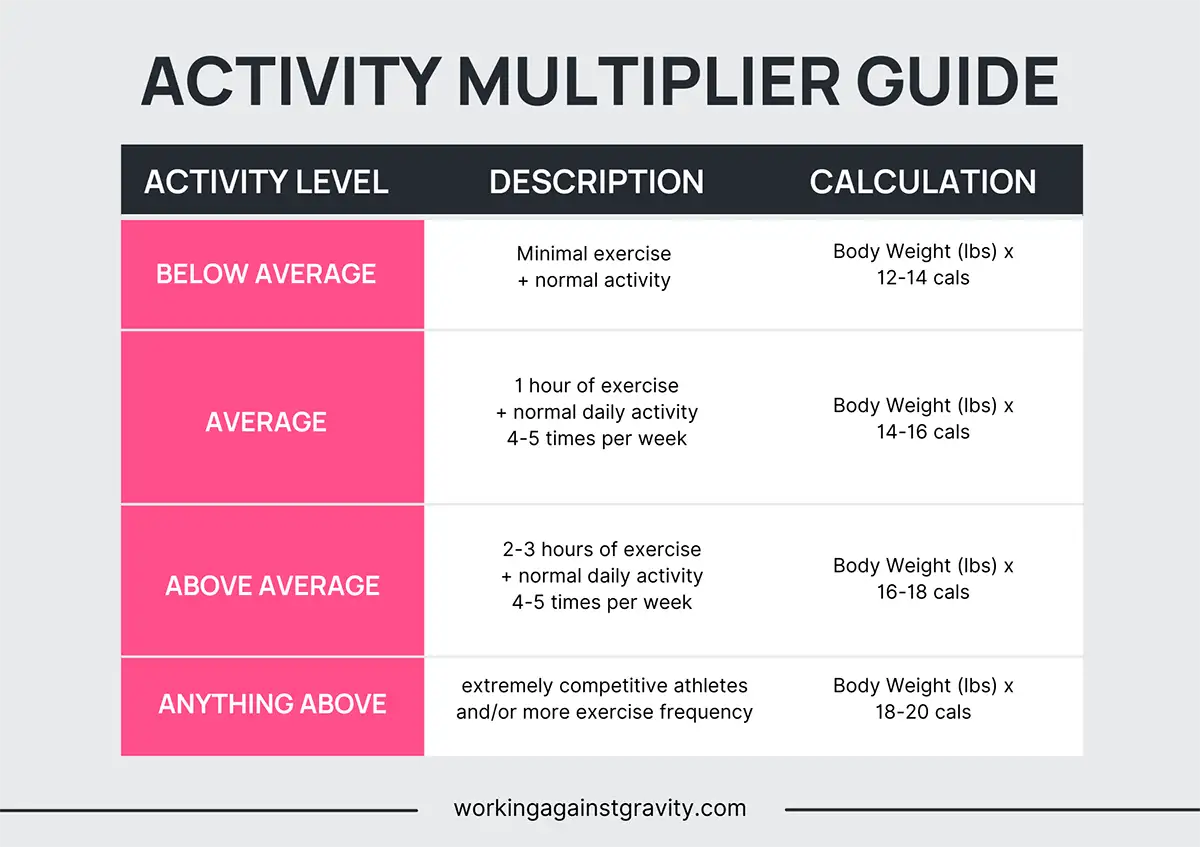
Advertisement
How to Calculate Calories for Weight Loss or Muscle Gain
Now that you have your maintenance calories set, choose your calorie deficit if you’d like to lose weight. If you want to gain mass, you need to calculate a calorie surplus.
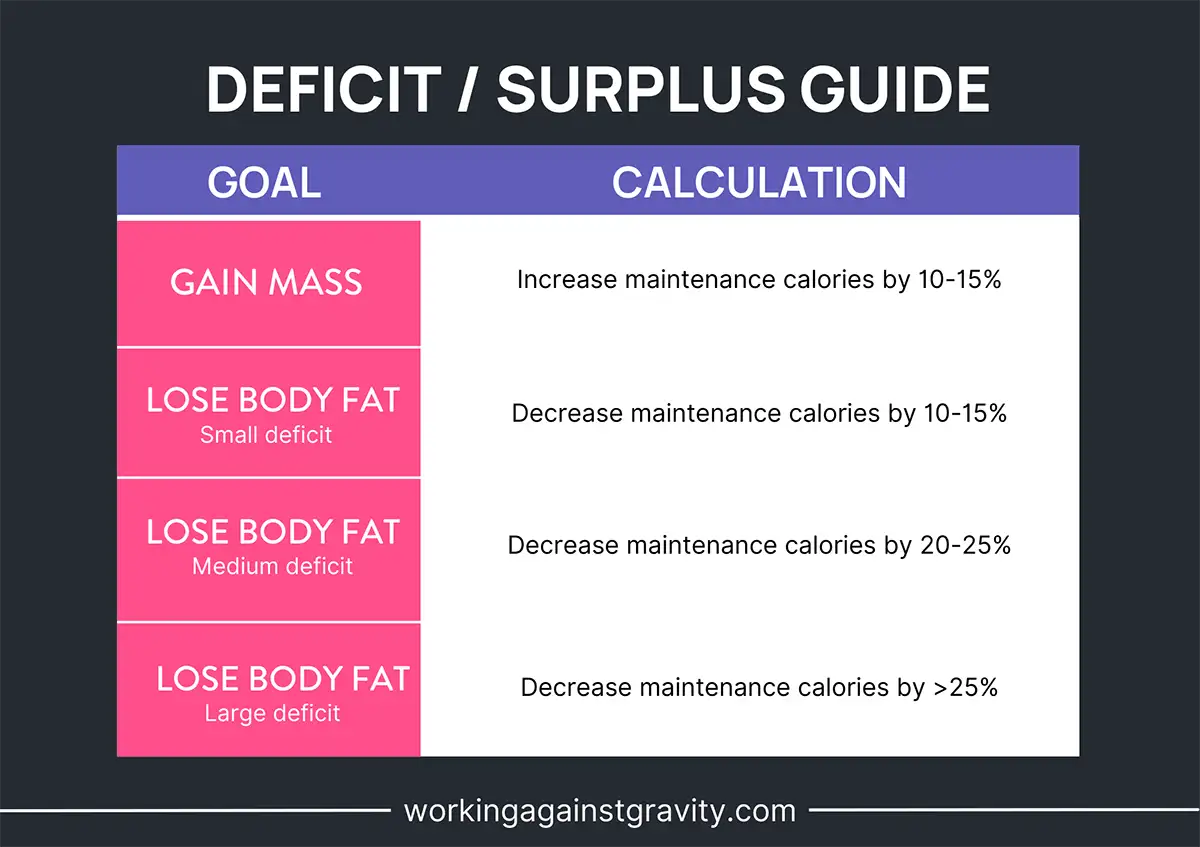
Wondering if you should lose weight or gain weight? Check out our article Should I Bulk, Cut, Reverse or Maintain? Our free online calorie calculator cheat sheet provides guidance on which deficit level is best for you. Download it here!
Pro tip: Faster isn’t always better! Picking a realistic calorie intake that allows you to stay fuller and still perform well often leads to faster fat loss than going too deep, too soon, and feeling like it isn’t sustainable. This is where a coach can help!
How to Calculate Calories to Maintain Your Weight
Wondering how to calculate maintenance calories? You already did it! Take the number you found using the multiplier guide, and don’t apply a surplus or deficit. Use this number in the following steps as you learn how to calculate your macros from calories.
Advertisement
Starting at an estimated maintenance level may be helpful if you are newer to the nutrition and health space. Depending on what you’re eating right now, this may still be less than your current intake, and you may still see changes in your body weight and composition.
Tracking your macros and creating consistency somewhere is the best way to get practice and accurate feedback from your body. This will be “better” than consistently missing targets that feel too high or too low.
WAG Nutrition Coaches have tons of practice figuring out the most attainable place to start, given your nutrition history, current daily intake, preferences, performance goals, and timeline. But in general, we recommend starting with attainable targets even if they’re not exactly where you’ve calculated you “should be''.
How to Calculate Macros for Weight Loss
Now that you have your starting calories for weight loss, muscle gain, or maintenance, you might wonder, “Great, but how do I calculate my macros?”.
This next step takes more math (walk through it with our fill-in-the-blank macro calculator HERE!).
Advertisement
How to Get Macros from Calories
Macros are made up of calories. There are four calories in every gram of protein, four in every gram of carbohydrate, and nine in every gram of fat.
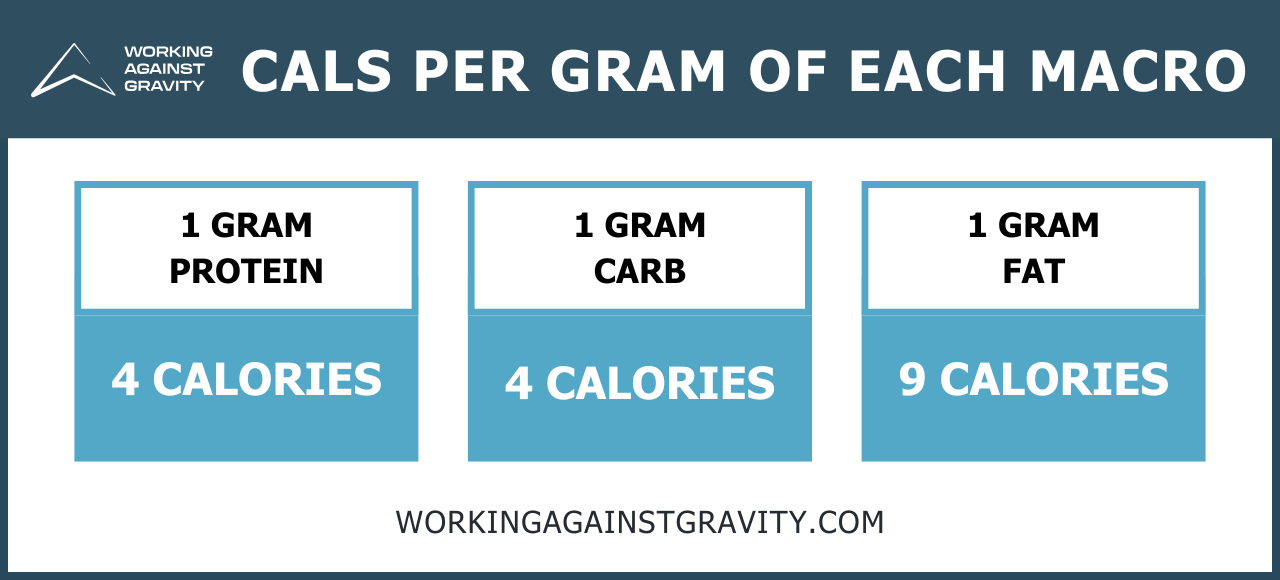
Once you figure out the total calories you need to eat in a day, you have to calculate the proportion of protein, carbs, and fats you need. From there, you can determine your macros.
How to Calculate Protein Macros
Wondering how much protein you need in a day?
At WAG, we usually recommend between .8-1 gram of protein per pound of body weight. Depending on current nutrition habits, goals, and activity, we may go outside of this range from time to time (do you believe that macro setting is an art, yet?).
Advertisement
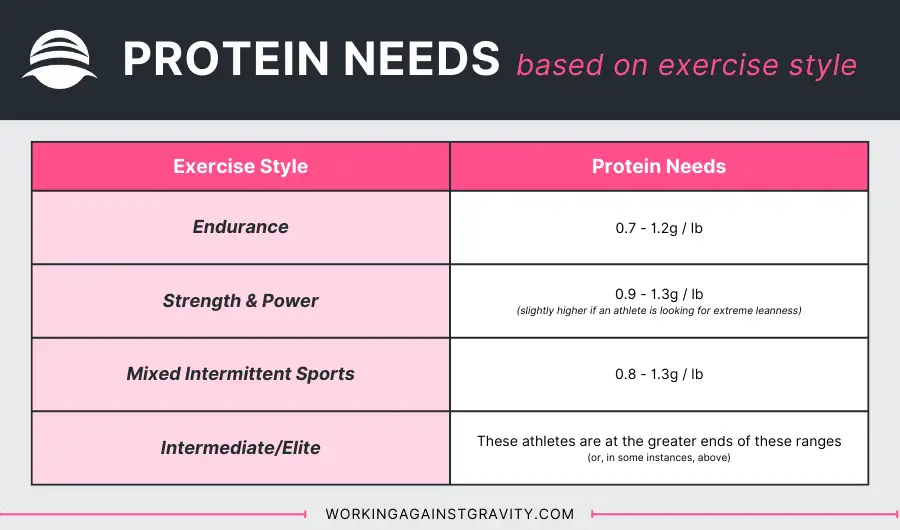
The recommended daily allowance (RDA) for protein is .8-1g/kg of body weight—about half of what we recommend. Wondering why?
Since the original RDAs were set in 1941 (yep, you read that right!), “A growing body of research indicates that protein intakes well above the current Recommended Dietary Allowance help to promote healthy aging, appetite regulation, weight management, and goals aligned with athletic performance.” [1].
Our clients have found tremendous success with protein intakes around the 1g per pound marker with slight variations in one direction or the other. HERE are some great protein suggestions.
(Note: please speak with a doctor if you have concerns based on your unique health needs!).
Advertisement
How Many Protein Macros Do You Need?
To determine how many protein macros you need, follow these steps:
1. Multiply your weight by your protein multiplier.
Example: 155lbs x 1 = 155g protein per day
2. Multiply your final number from #1 by four since there are four calories per gram of protein.
Example: 155 x 4 = 620 calories
3. Write down these two numbers (or enter them on your calorie calculator) and save them for the next step.
Example: 155g protein per day, 620 calories
How to Calculate Fat Macros
We recommend keeping fat intake between 25-30% of total calories. Because low-fat diets have been shown to hurt hormone health, we usually recommend that women stay on the higher end of this range [2].
Advertisement
This is where dietary preference comes into play. If you’re eating enough protein and keeping calories within an appropriate range based on your goals, experiment with a carb-to-fat ratio that reflects what you like to eat.
If you enjoy higher-fat foods, aim for a higher percentage of calories from fats - you could even play around with closer to a 35% intake. Here are some examples of healthy fat foods.
How Many Fat Macros Do You Need?
To determine how many fat macros you need, follow these steps:
1. Multiply your overall calorie needs by your fat percentage.
Example: 1,920 calories per day x 28% from fat = 538 calories from fat
2. Divide your calories from fat by 9 (remember, there are nine calories per gram of fat).
Example: 540 calories / 9 calories per gram = 60g of fat per day
Advertisement
3. Write down these two numbers (or enter them on your calorie calculator) and save them for the next step.
Example: 60g fat, 540 calories
How to Calculate Carbohydrate Macros
Now that you know how many calories come from protein and fat, you need to figure out how many calories are left to allocate to carbohydrates.
Pro tip: If you participate in high-intensity training (ex: CrossFit), you may find that a higher carb intake is the way to go so you have fuel for your training and recovery! Here are some easy ways to get more carbs!
How Many Carbs Macros Do You Need?
To determine how many carb macros you need, follow these steps:
1. Add your calories from protein and calories from fat.
Example: 620 calories from protein + 540 calories from fat = 1,160 calories
Advertisement
2. Subtract those calories from your total calories.
Example: 1,920 - 1,160 calories = 760 calories leftover for carbs
3. Divide your carb calories by 4 (four calories per gram of carbohydrate) to find your total carb macros.
Example: 760/4 = 190g
Now you have your final macros! 155P/60F/190C
Remember, if you’re feeling a little lost with the math, our free online calorie and macro calculator will help walk you through this step-by-step process with more examples and case studies.
If you still want more support and guidance, consider hiring a 1:1 online nutrition coach. There is a lot to setting macros besides the numbers. Preference, timeline, previous dieting history, and even schedule can determine what macros are “best” for you and your goals.
Advertisement
References:
- Philips, S., Chevalier, S., & Leidy, H. (2016). Protein “requirements” beyond the RDA: implications for optimizing health. Appl Physiol Nutr Metab, 41(5), 565-72. doi: 10.1139/apnm-2015-0550.
- Panth, N., Gavarkovs, A., Tamez, M., & Mattei, J. (2018). The influence of diet on fertility and the implications for public health nutrition in the united states. Front Public Health, 6, 211. doi: 10.3389/fpubh.2018.00211
Schedule a Free Intro Call
Working Against Gravity has led the macro tracking and health space for over a decade. Our team doesn’t just understand the science of nutrition—we’ve spent years mastering the art of tailoring it to fit your life. That means no cookie-cutter plans, just real strategies that have worked for over 30,000 people.
Schedule a free call with our team to learn how working with a 1-on-1 WAG coach will help you reach your goals.



